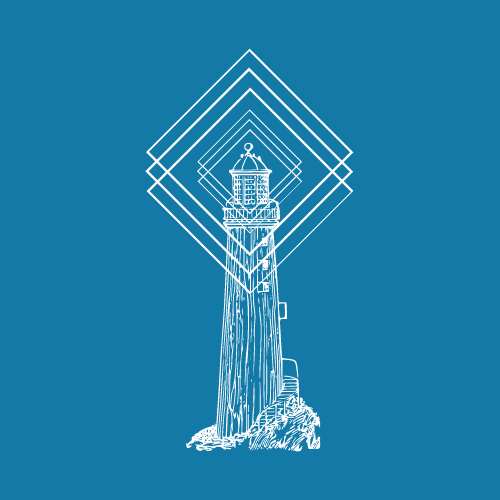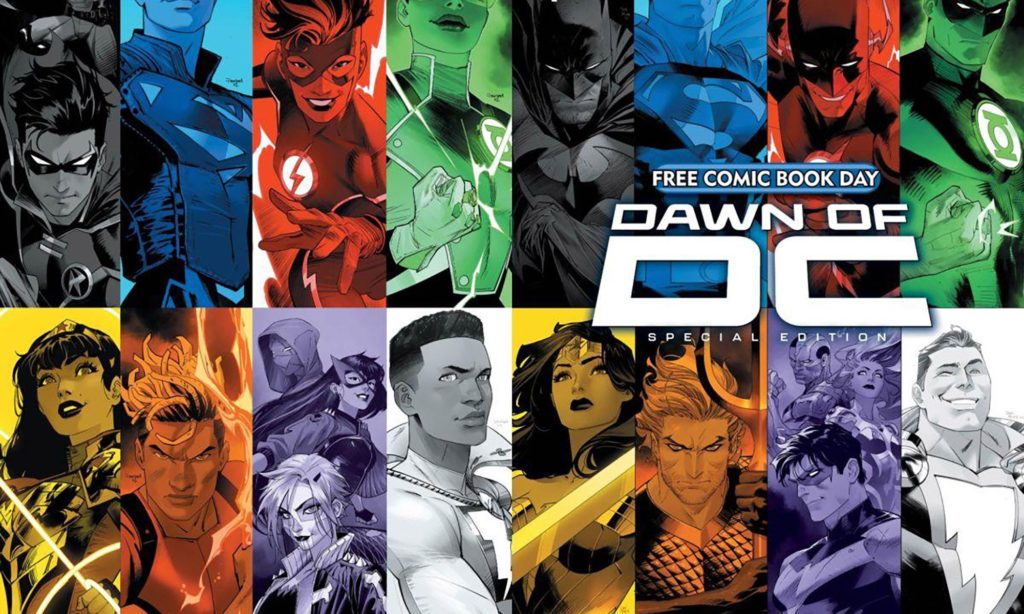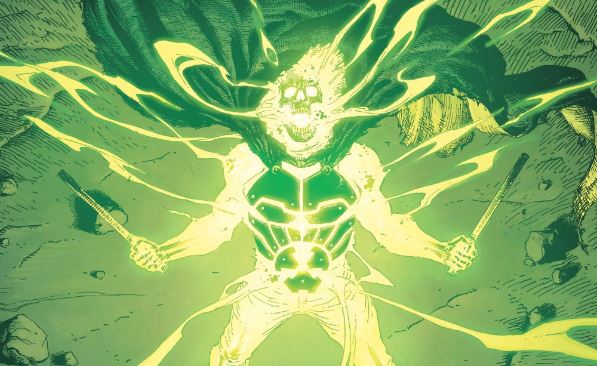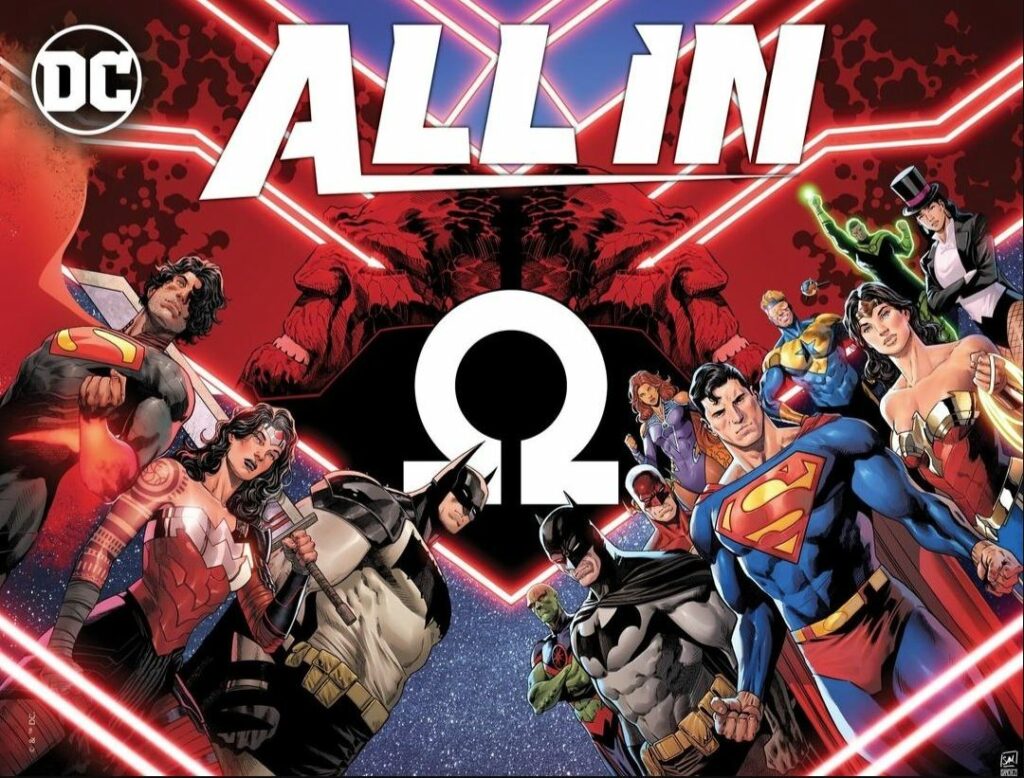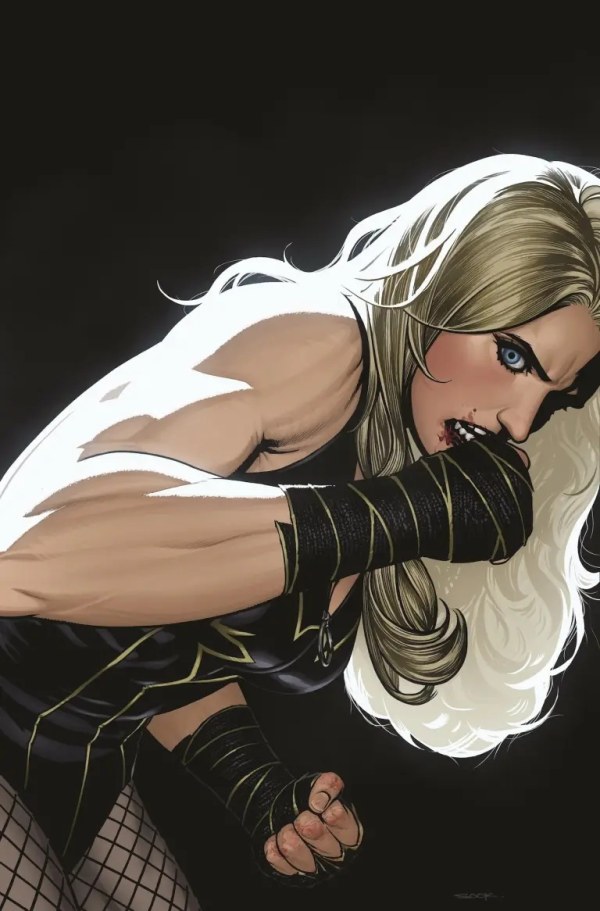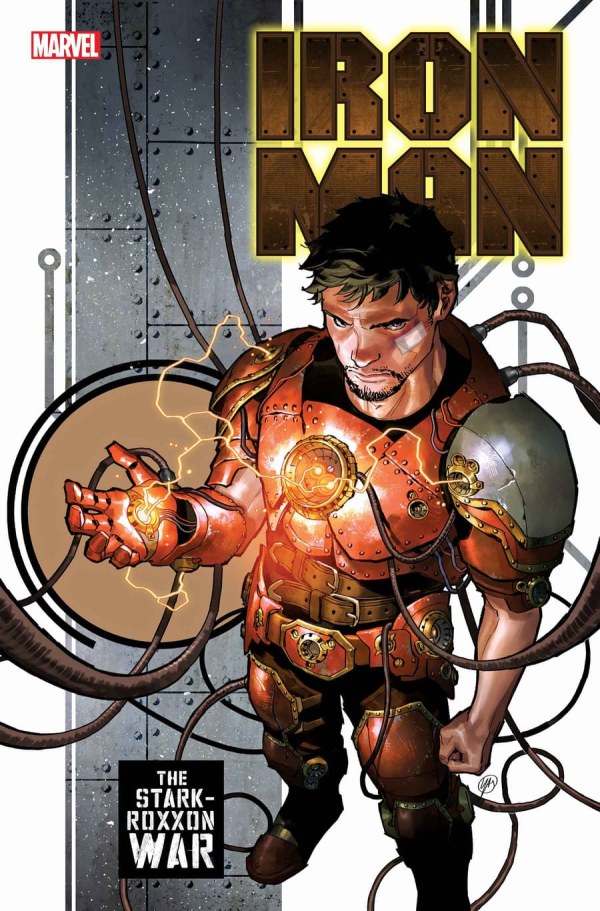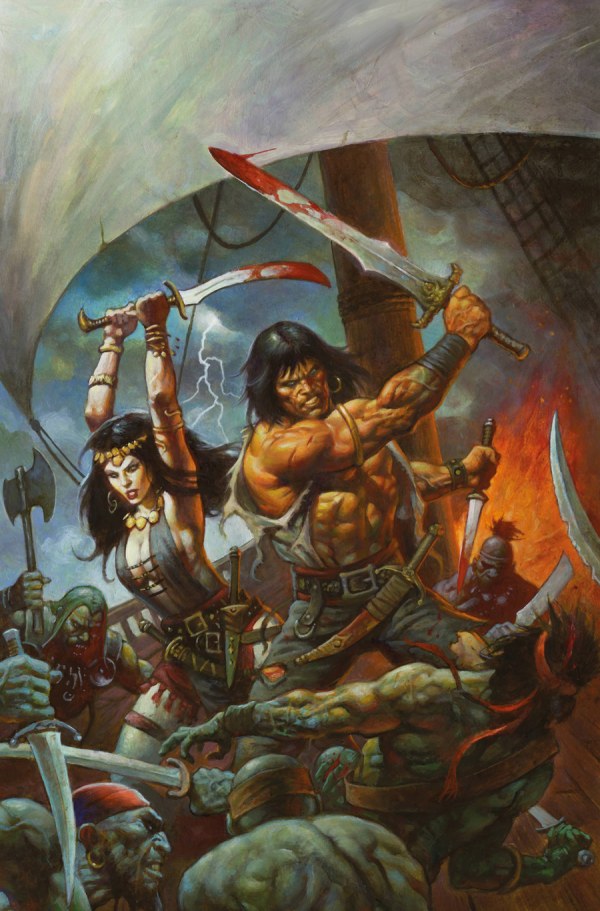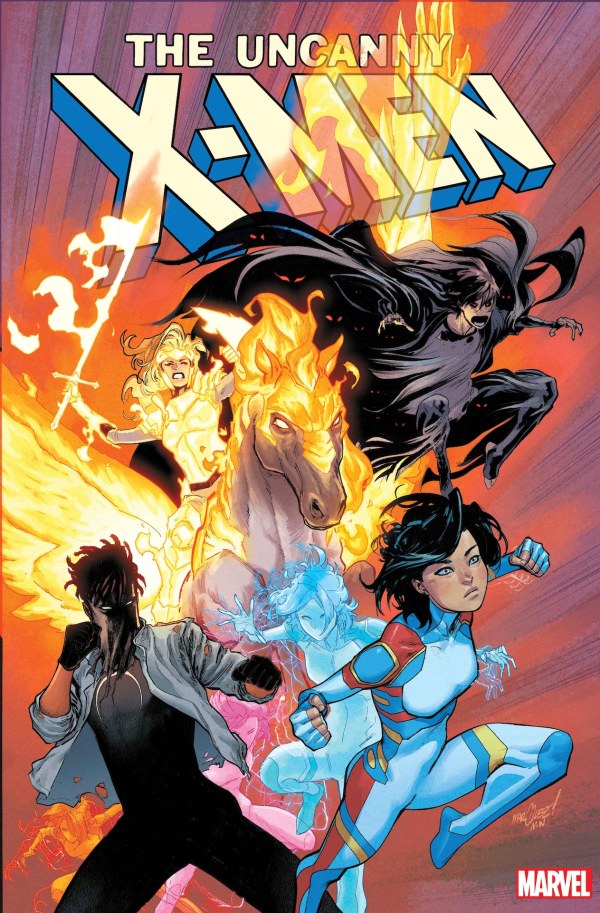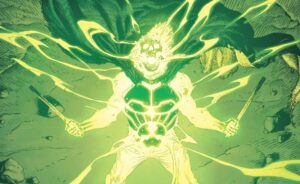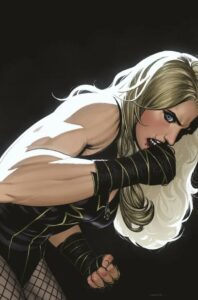In 2023, DC Comics had just capped off one era of publishing and everyone had one question: what’s next? The Justice League had returned from “death”, the Dark Army had been defeated and a new generation of heroes, like Yara Flor, Jon Kent and Jace Fox, had risen to the mark.
The answer, it turns out, was a relaunch: the Dawn of DC.
Table of Contents
What is the Dawn of DC?
Dawn of DC is the label given to the period of comics DC published during 2023, following on from the events of the Infinite Frontier saga that kicked off back in 2021.
The initiative focused on re-establishing what the core pillars of DC’s publishing line were, as titles like Green Lantern and The Flash saw increased focus from the publisher with most of the major heroes not only receiving revamped books, but were also supported by a suite of smaller, supporting titles around them.
In a certain sense, it was something like a halfway step between the general experimentation of the prior two years, and the “families” of titles that seemed to dominate DC Comic’s publishing strategy since the New 52 in 2011.
Thematically, lots of titles saw a back-to-basics approach as creative teams ensured readers had stories that remembered what made the characters work at a core, essential level, providing easy entry points for new readers and lapsed readers alike. On top of that, DC’s line generally saw a shift towards more joyful, optimistic stories that allowed characters to operate in their truest element. The other defining characteristic of the era, particular when you look at books like Superman, Green Arrow and The Flash was the renewed focus on legacy and family. Younger, forgotten characters were returned to continuity, and storylines tended to showcase how these characters had grown over the decades to include whole teams of heroes.
Do I Need to Read Anything Before the Dawn of DC?
In short, no. The Dawn of DC is designed to offer readers a series of fresh jumping-on points, whether that be through large-scale, tentpole events or numerous relaunches of their classic ongoing titles.
If, however, you would like some more context on what preceded the Dawn of DC, then there are some key points of reference.
Primarily, you’ll want to go back to Dark Crisis on Infinite Earths – a sequel to the original Crisis on Infinite Earths from 1985. This story is written by Joshua Williamson with art by Daniel Sampere, and it focuses on a “world without the Justice League” where darkness rises and the younger generations of heroes step up to take centre stage.
This establishes a key theme that Williamson – one of, if not the lead architect at DC Comics during this time – is interested in exploring. As such, many of the Dawn of DC titles will play with this idea, each bringing their own perspective to the core theme.
Furthermore, if you see Joshua Williamson’s name on a title released during 2023, then take that as a strong indicator that the book in question will be in some way relevant to the overarching narrative driving the era. Other key creators to look out for include: Tom Taylor, Phillip Kennedy Johnson, Mark Waid and Tom King.
Additionally, a couple of series don’t get full relaunches going into this era, as they only recently started new storylines prior to its commencement. Examples of these include: Batman by Chip Zdarsky and Jorge Jiminez, Action Comics by Phillip Kennedy Johnson (and a host of artist talent too long to name), Catwoman by Tini Howard and Nico Leon and Poison Ivy by G. Willow Wilson and Marcio Takara to name but a few. None of these are considered compulsory reading to understand the era, though Zdarsky/Jiminez’s Batman run and Action Comics naturally commands prominent storylines that do spill out into other series (meaning, if you find yourself reading the Superman titles and wondering where certain plot points came from, the answer is likely here).
The Dawn of DC’s Key Series and Major Events – Timeline
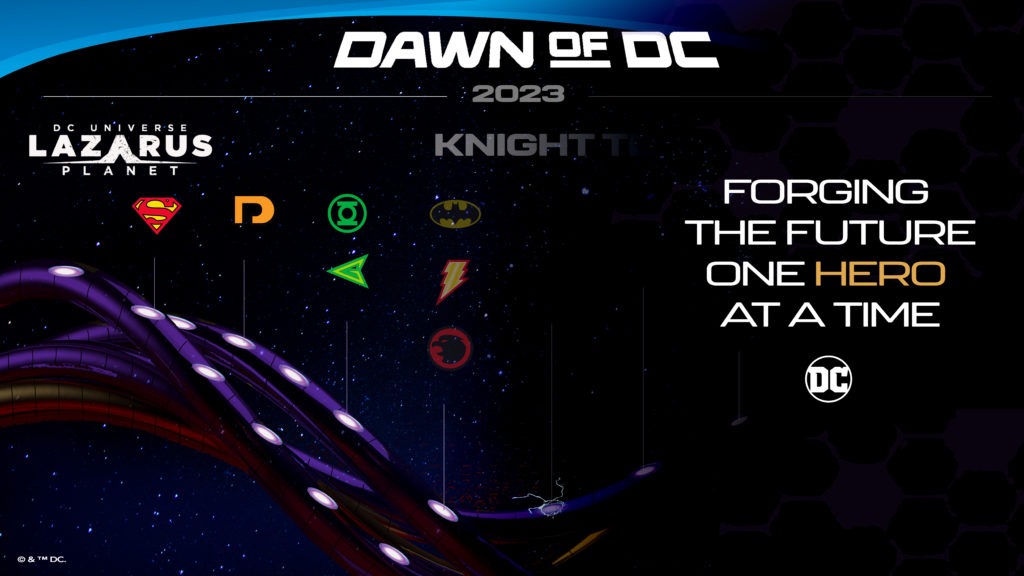
The Dawn of DC was described by the publisher as a ‘yearlong storyline’ that would play out over the course of various ongoing and limited series. In reality, the key elements of the larger narrative occur in the event books that populate the era, as well as certain other key titles alluded to earlier.
Below, you’ll find a breakdown of all the key series – their general synopses, associated themes, attached characters and creators – and some indication as to how vital their reading is to understanding the era as a whole.
With that being said, let’s start at the beginning…
Prelude: Lazarus Planet
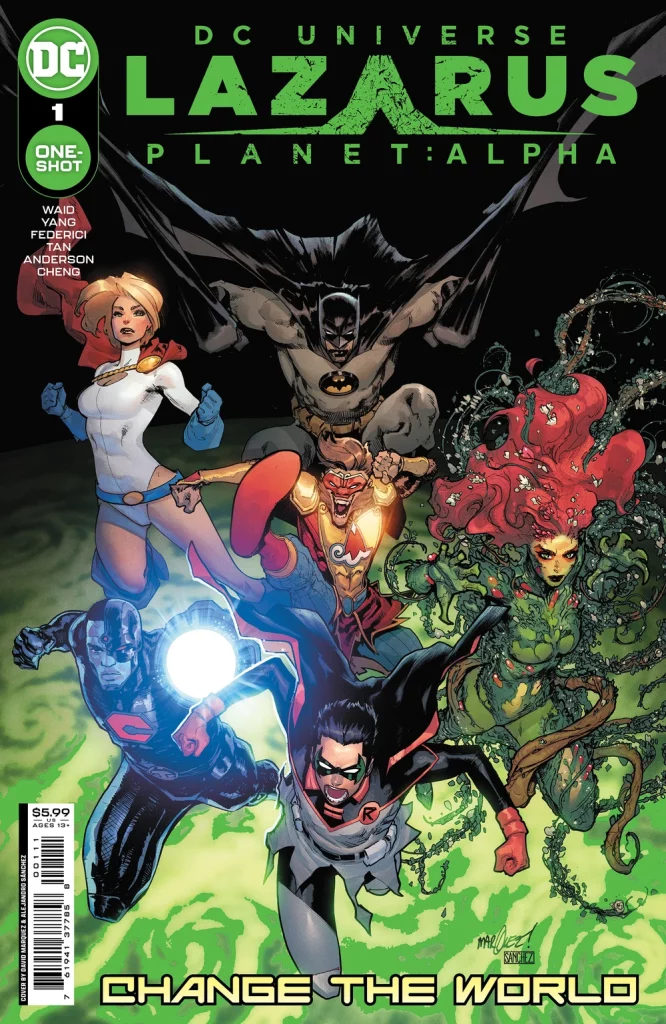
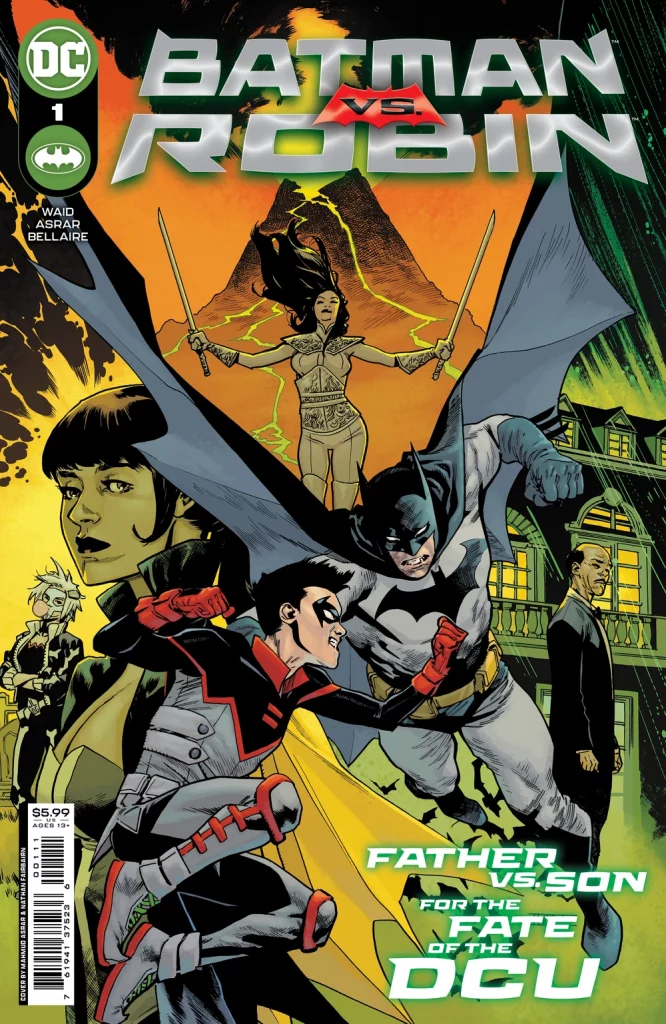
Bridging the gap between the Infinite Frontier saga that culminated in Dark Crisis on Infinite Earths, and the Dawn of DC proper, Lazarus Planet steps up to bat.
Interestingly, this was an event that took place between the pages of another event(-like book) named Batman vs Robin. In it, the Devil Nezha seeks to steal power from all the magical artifacts and practitioners in the DCU, and in his pursuit causes the volcano on Lazarus Island to erupt.
The result? Clouds of green Lazarus rain covering the Earth. If you come into contact with the magically-infused rain water, you run the risk of developing all new superpowers, albeit with the randomness and inherent potential for danger that all magic carries.
Lazarus Planet is a fun, if not entirely consequential, tale that puts new spins on a very of heroes and villains throughout the DCU, as well as facilitating the creation of some entirely new characters too. Given the number of short stories that comprise the series, it is naturally a bit of a mixed bag. Some vignettes provide key developments for important characters, such as the electric blue abilities that Jon Kent Superman manifests, while others feel far less significant and are present more for whimsy than anything substantial in a plot or thematic sense.
For the completionists out there, you’ll naturally want to dive into this; plus, if you want a sampling of what is coming down the line in the Dawn of DC then there really is no easier way to see a little bit of everything in one contained experience. Just make sure to also pick up Batman vs Robin to get the full picture on the wider plot!
0. The Dawn of DC Relaunch – Ongoing Series
After Lazarus Planet, the Dawn of DC begins in full. Certain series continued with their existing storylines and numbering (Batman, Catwoman etc.) while others either relaunched or saw new series where once they were found lacking.
If you want to follow the “spine” of this era, and to also start with the book that truly kicked everything off, then look no further than chief creator Joshua Williamson’s run on Superman.
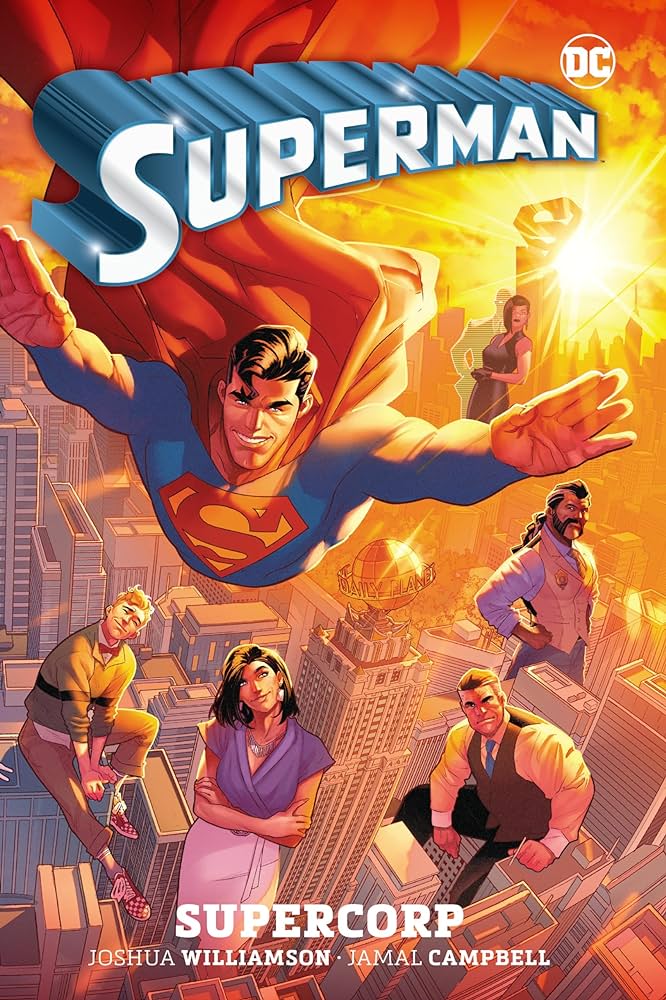
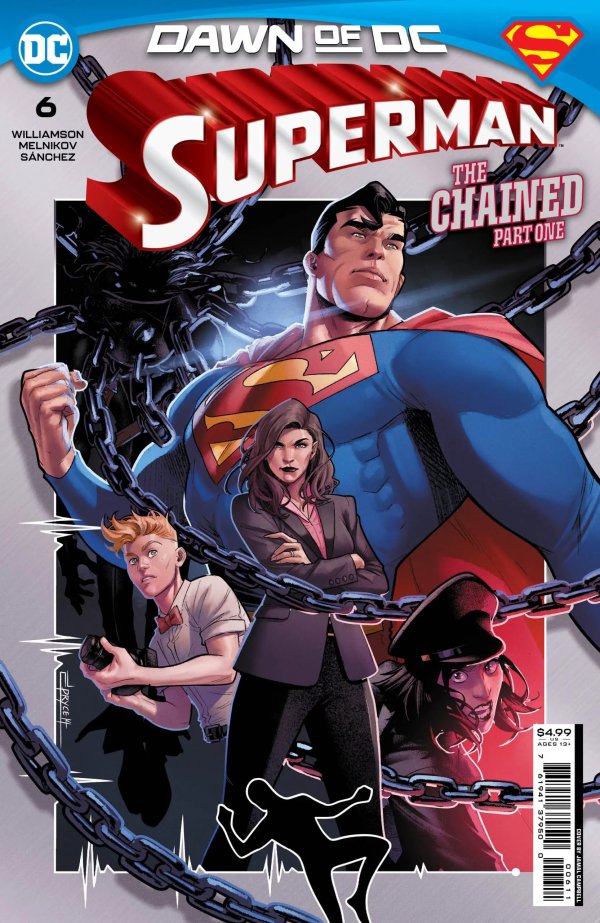
Williamson and Campbell’s Superman is the perfect place to start for a multitude of reasons.
First, and this cannot be overstated enough, it is simply a near-perfect Superman story. Williamson truly understands the heart and appeal of the character on such an intimate level that this feels almost like it’s in conversation with books like All-Star Superman and Superman: For All Seasons about what makes the big blue boy scout such an enduring fictional figure, despite being written years on. Combine that with Campbell’s breathtaking artwork that capture the majesty not just of the titular character himself, but also his city, as well as the charm, vibrancy and personality of those around him, and you have a run for the ages playing out every month.
Second, while the book is very much focused on delivering short, punchy adventures (almost like it’s once again in conversation with other work, albeit this time it’s Williamson’s own prior multi-arc, plot-heavy stories) it also manages to thread through some important wider-universe details. Not only does it establish what’s going on with the Superfamily and Lex Luthor, but it also sets up larger scale stories of its own, particularly around a certain green-skinned alien…
Keeping on the Williamson train, the next book worth highlighting here would be his run on Green Arrow, with art by Sean Izaakse.
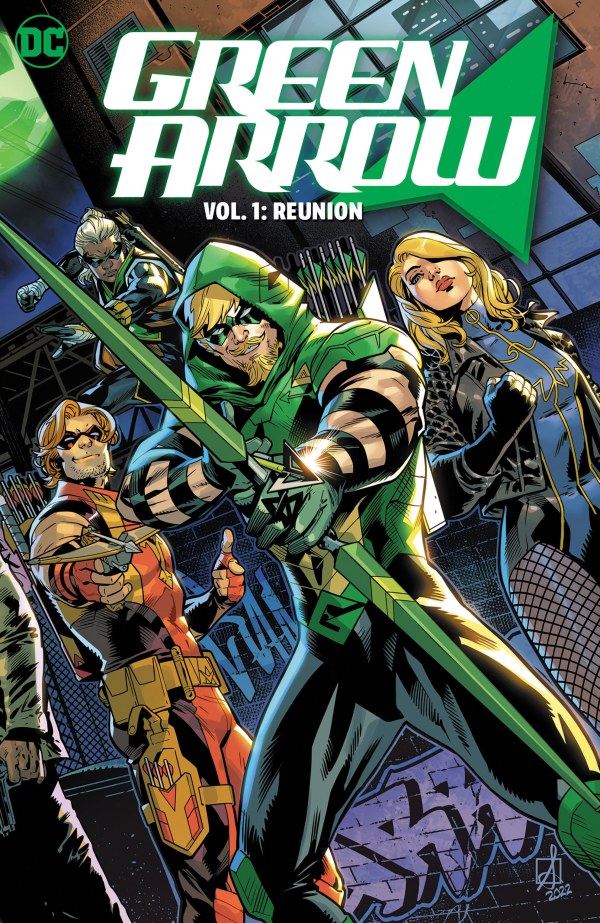
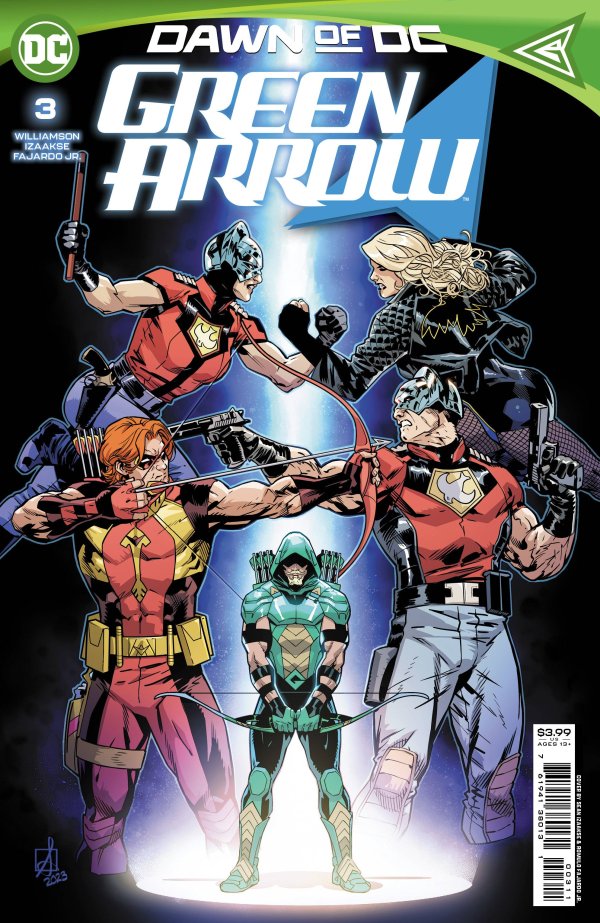
This series is important to the Dawn of DC storyline for a couple reasons. The most immediate reason is that it details, perhaps in the greatest clarity of any of the ongoing DC comics, what Amanda Waller is up to.
In case you didn’t read Dark Crisis on Infinite Earths, the epilogue to that event reveals that Waller is wasting no time in filling the vacuum of the DCU’s big bad, as she has her own machinations that she plans on visiting upon the heroic community. As such, Green Arrow takes on a surprising significance within the overarching story machinery that’s driving the era.
Beyond that, this series touches most directly on the core themes of legacy, re-establishment and optimism that underpin the Dawn of DC. The first storyline, “Reunion”, which releases as a collected edition in March 2024, sees the Arrow family searching for the lost Oliver Queen, who is in turn searching for Roy Harper’s long-thought-dead daughter Lian.
This title is geared primarily toward long-time readers that have been waiting for certain creative decisions regarding these characters to be undone, but it does also provide a compelling adventure for the newly initiated as well.
The other most significant ongoing series to mention is Titans, from Tom Taylor and Nicola Scott.
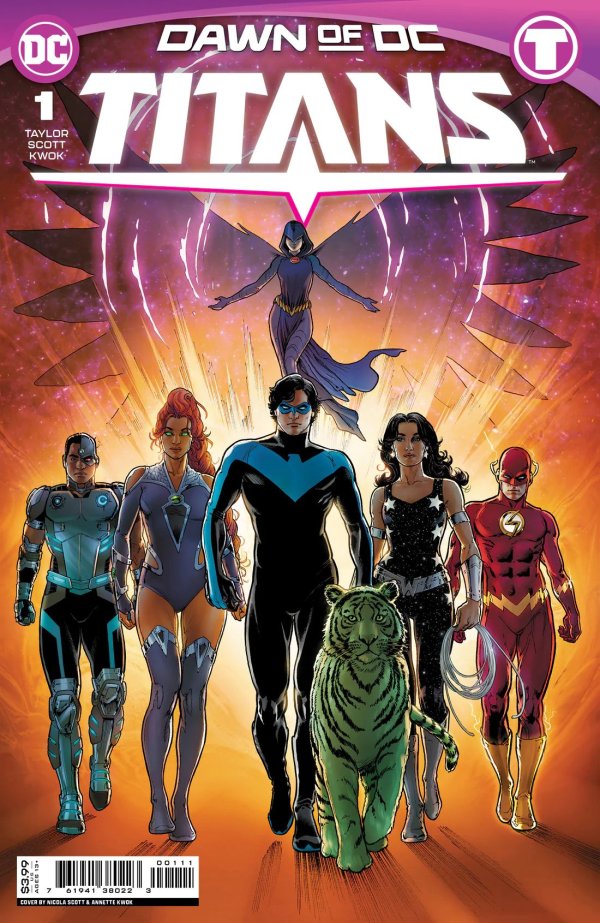
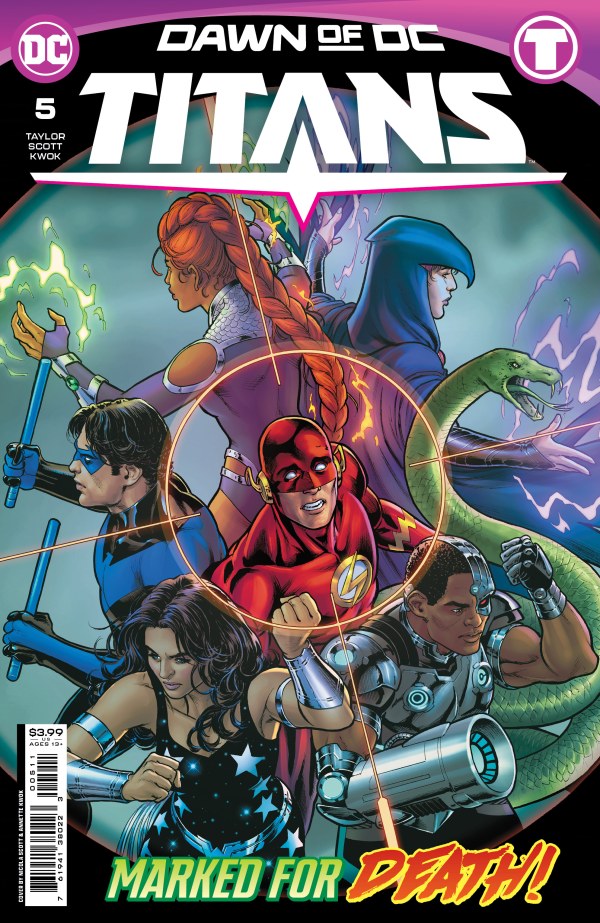
With the Justice League disbanded, it falls to Dick Grayson and his oldest friends to fill their shoes. The time of the Titans is now, as they become DC’s premier superhero team!
Titans serves as the core team book in the line, both establishing what Nightwing is doing on a larger scale (outside of the largely Blüdhaven-centric stories in his solo title) and also seeding elements of bigger stories yet to come in the Dawn of DC.
All the staples of a Tom Taylor joint are here, with heartwarming and emotionally resonant character work on full display as he demonstrates exactly why the Titans are ready to step into the spotlight, and also how they operate differently from their predecessors. Joined by the wonderful Nicola Scott on art, this series is as detailed visually as it is in its characterisation.
To get the full picture on what’s going on with the Titans, as well as the direct lead up into the summer blockbuster Titans: Beast World, this is required reading.
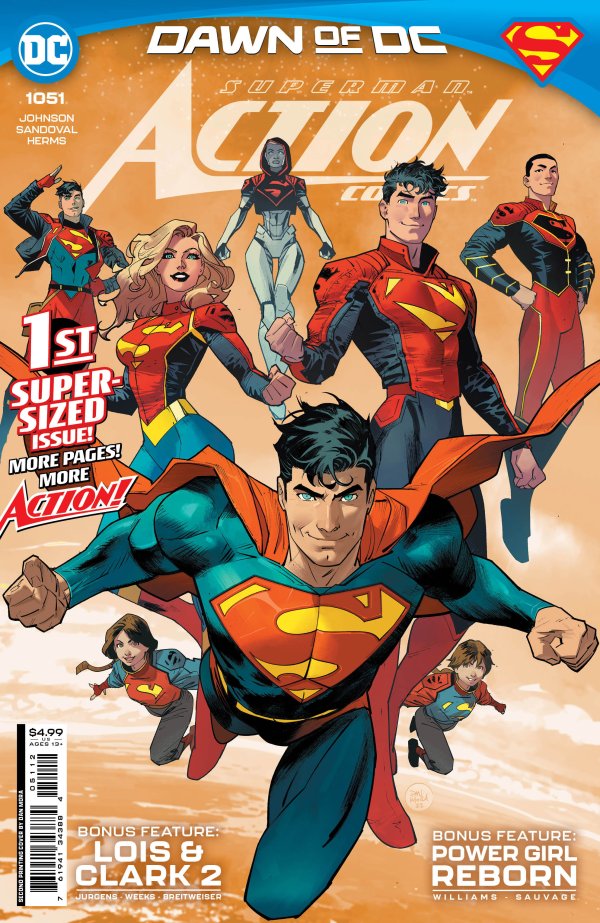
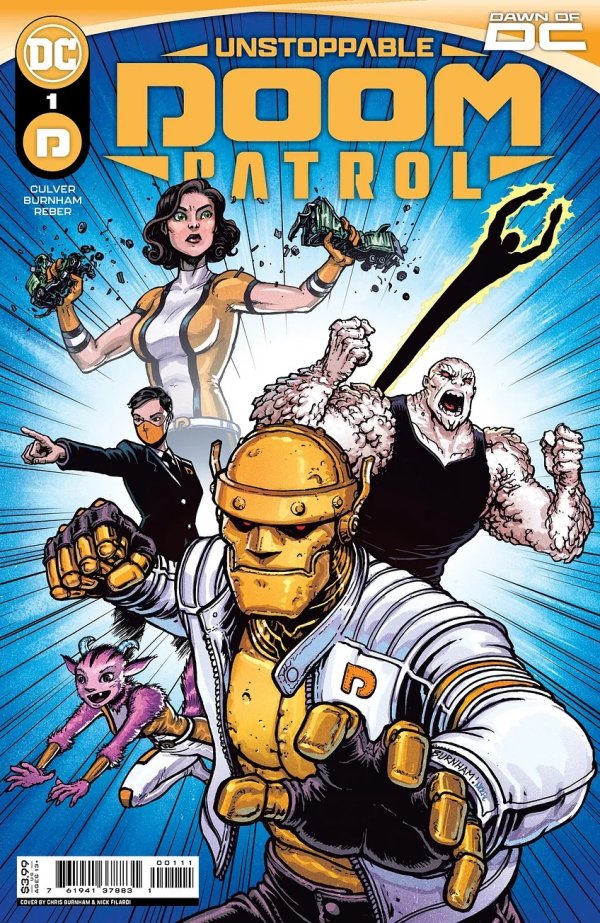
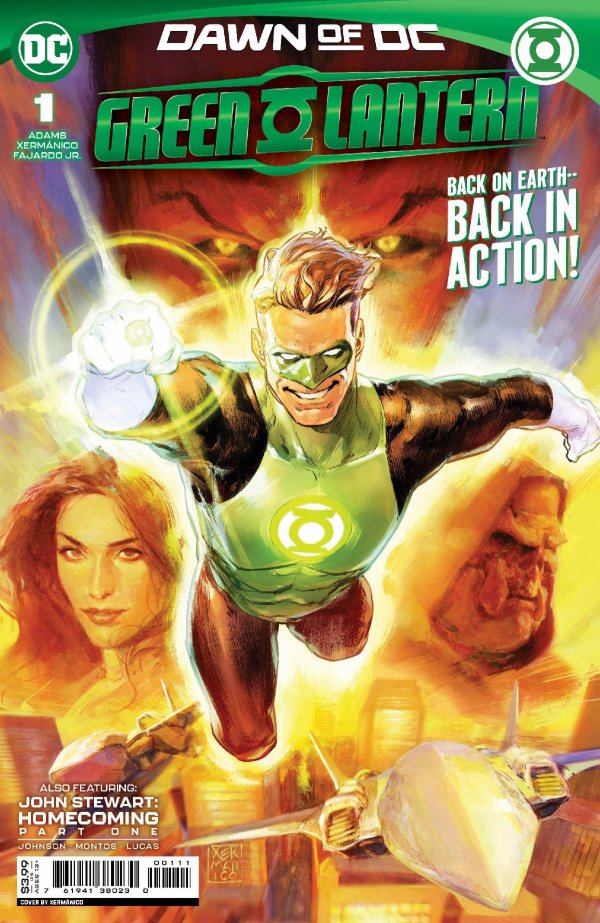
There are, of course, plenty of other series running throughout the Dawn of DC. Series like Detective Comics are stunning in their accomplishment, but haven’t been mentioned thus far as their events are largely disconnected from the rest of the line.
Instead, if you’re looking for other books important to the structure of the Dawn of DC – whether that be through the establishment/development of key characters, the plot lines themselves or even just the titles that echo those themes of the era – then the following list gives some prime examples:
- Unstoppable Doom Patrol
- Adventures of Superman: Jon Kent
- Action Comics
- Green Lantern
- Green Lantern: War Journal
- Nightwing
1. Knight Terrors
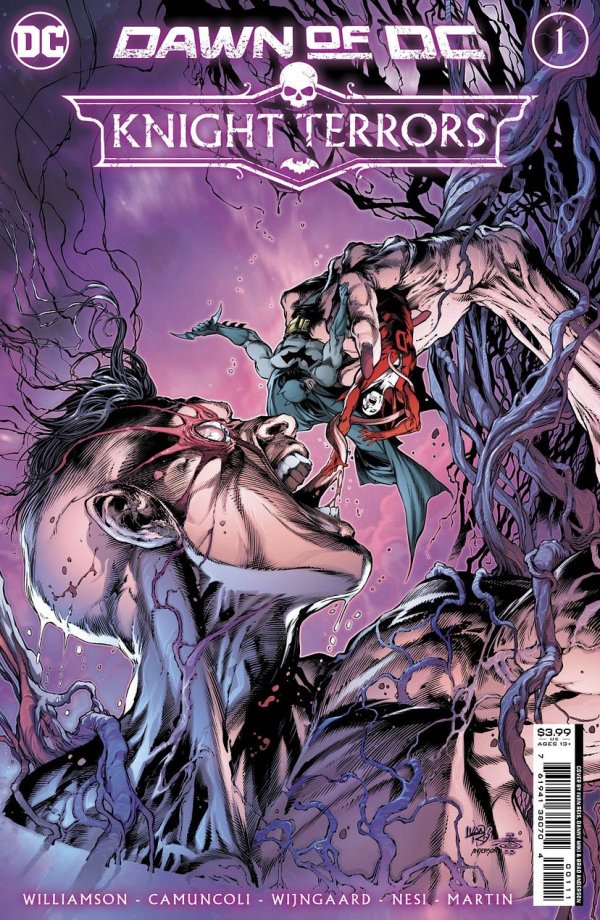
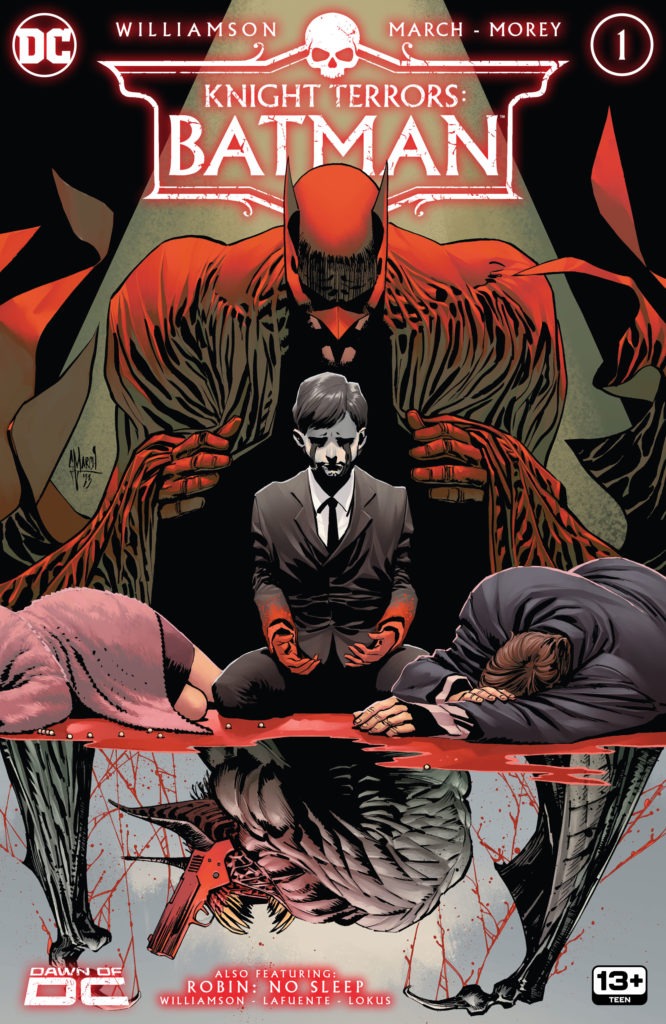
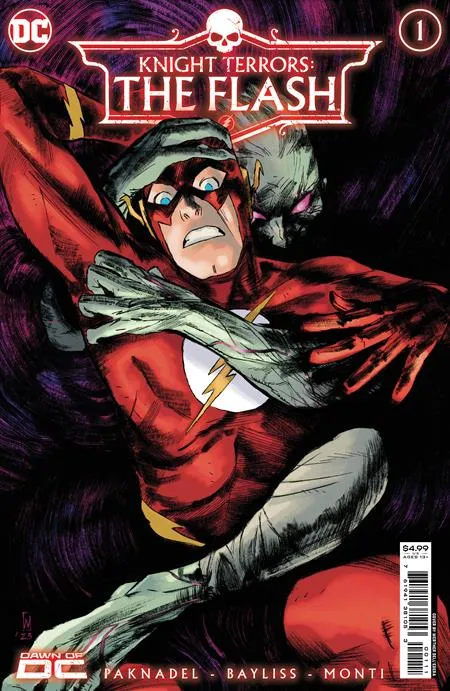
Written by Joshua Williamson. Art by Guiseppe Camuncoli & Caspar Wijnaard.
Main Event: Knight Terrors: First Blood #1, Knight Terrors #1-4, Knight Terrors: Night’s End #1
The first major event of the Dawn of DC – and a controversial one! Not because of the story content itself, that actually benefitted from being a remarkably classic, inoffensive tale about the world’s heroes fighting nightmare monsters.
No, the controversy came from its place within the publishing line. Knight Terrors was the type of event that swept across the entire DCU, and as a result crossed over into the storylines of most of the ongoing series. Because of this, titles like Titans, Green Lantern and Shazam! were effectively put on hold only two months into DC’s otherwise successful relaunch. And yes, other books like Batman/Superman: World’s Finest, Hawkgirl and Adventures of Superman: Jon Kent continued uninterrupted, but the positioning of the event effectively killed any momentum the line had.
However, coming to the event after the fact allows you to circumvent all of that frustration and better appreciate the event for what it is: a slightly spooky, slightly campy romp through the magical side of the DCU. It follows Batman, Robin (Damian Wayne) and Sandman (Wesley Dodds) as they fight to stop new villain Insomnia from plunging the world into an endless sleep.
Superficially speaking, this event isn’t the most crucial element in the wider Dawn of DC story. As stated, it serves more as a fun romp through the darkest fears of the DC’s greatest heroes and villains than it does as a substantial piece of the macro-narrative. That being said, there are some key moments, particularly in the final chapter that may have ramifications down the line, and it also provides some early building blocks for the Amanda Waller plotline that’s simmering in the background of all the other books.
It also provides important context for the two proceeding events, whether that be Batman and Catwoman’s mental states going into Batman/Catwoman: The Gotham War or the debut of a new villain at the core of Tom Taylor’s Titans: Beast World event later in the year.
2. Batman/Catwoman: The Gotham War
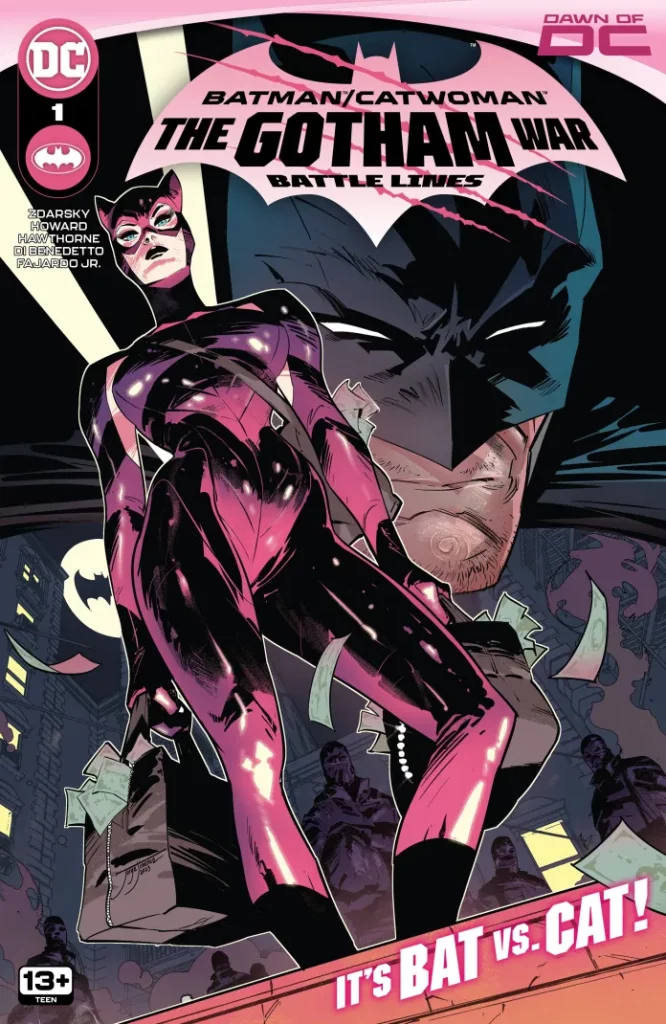
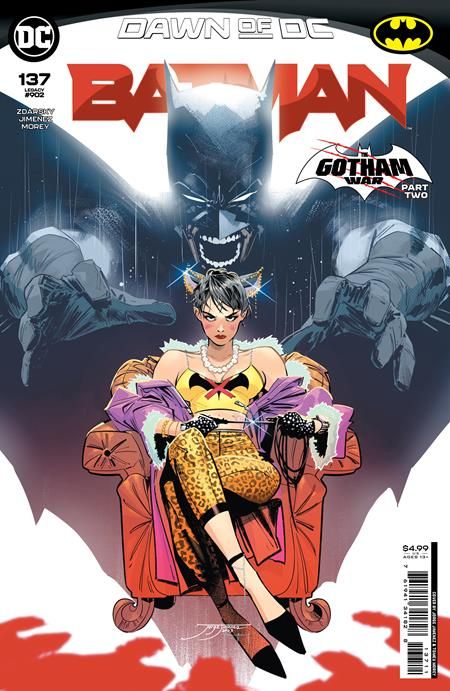
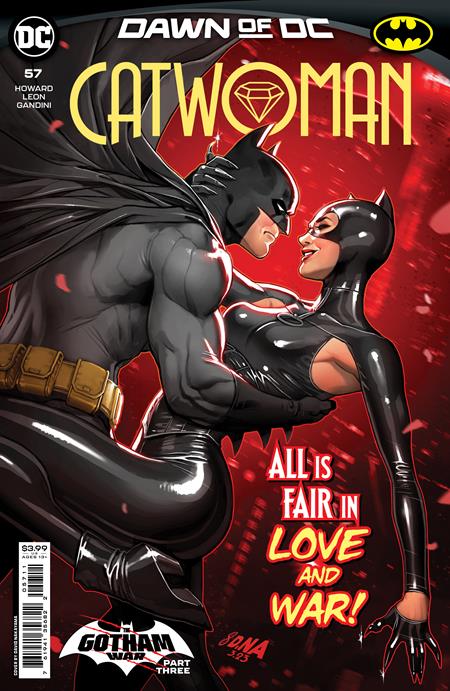
Written by Chip Zdarsky, Tini Howard & Matthew Rosenberg. Art by Jorge Jiménez, Mike Hawthorne, Nico Leon & Nikola Čižmešija.
Main Event: Batman/Catwoman: The Gotham War – Battle Lines #1, Batman #137-138, Catwoman #57-58, Batman/Catwoman: The Gotham War – Red Hood #1-2, Batman/Catwoman: The Gotham War – Scorched Earth #1
Following on immediately from Knight Terrors, Batman/Catwoman: The Gotham War sees the ongoing Batman and Catwoman titles cross over in a Civil War-esque clash of ideologies.
On one side, Selina Kyle aims to control the criminal underworld, utilising the cadres of goons she’s recruited in her own series to bring the remaining Gotham criminals under her wing. The plan? Prevent violent crime by tackling the dispossession and disenfranchisement that she sees as the drivers behind their criminal activity. Instead, Catwoman plans to train them, and in doing so give them skills and a purpose that they’ll put to use stealing from Gotham’s elite in a twisted Robin Hood-style scheme. Alongside strict rules surrounding violence and who the criminals can target for theft, Selina believes this can help solve the problem of crime in Gotham – at least as much as it will ever be “solved”.
Batman, naturally, takes issue with this.
It’s a slightly odd crossover, in that of all the events in the Dawn of DC this one has some very natural options for tie-ins that were just never capitalised on. In particular, the ongoing Nightwing series makes practically no reference to this, despite his direct involvement. Additionally, what is marketed as a kind of ideologically driven conflict in the Batfamily ultimately gives way to a story that builds very directly on the events of prior Batman arcs. Bruce fails to even consider a middle ground, as his mind continues to be ravaged by the aftereffects of Knight Terrors and the machinations of Zur En Arrh in the “Failsafe” and “Bat-Man of Gotham” storylines, and fighting occurs more as a result of his psychological breakdown than any kind of philosophical debate on the nature of crime.
If you’re planning on reading the ongoing Batman run by Chip Zdarsky, Jorge Jiminez and Mike Hawthorne, then this is the essential next chapter on that journey, and actually works much better than I think most give it credit for (at least, within that context). If, however, you’re looking for a contemplative and intelligent exploration of a Bat-Civil War, or are only interested in the crucial chapters of the Dawn of DC, then you can move past this event without missing much context.
3. Titans: Beast World
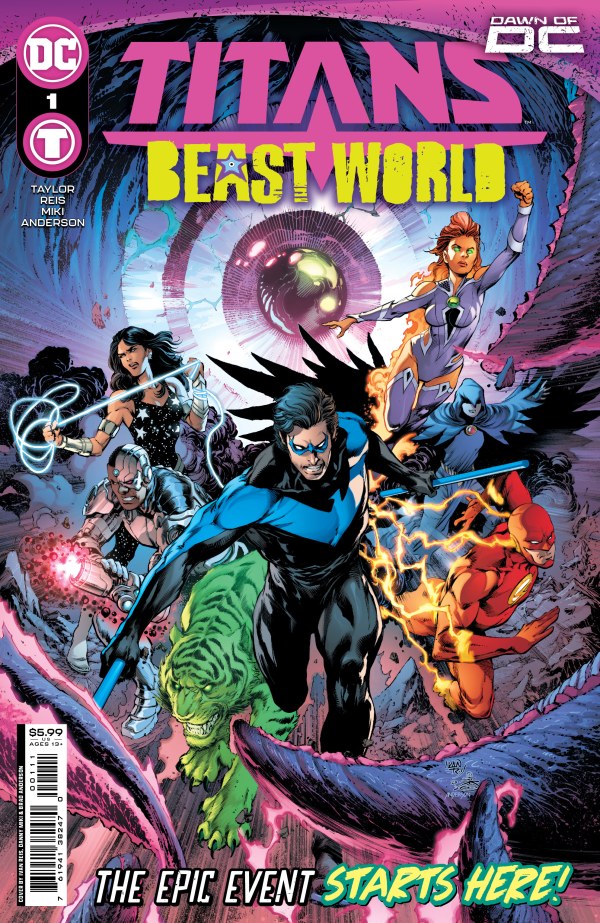
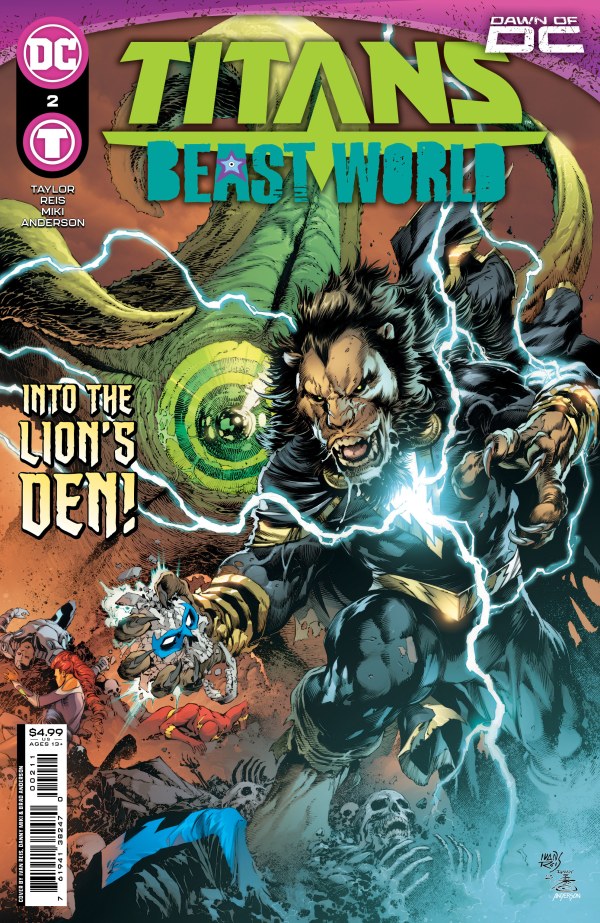
Written by Tom Taylor. Art by Ivan Reis, Eduardo Pansica, Lucas Meyer.
Main Event: Titans: Beast World #1-6
The culmination of the first year of the Dawn of DC! For the first time ever, DC’s next generation of heroes, the Titans, headline an event.
With the Justice League still disbanded, it falls to Nightwing, Raven, Starfire, Cyborg and Beast Boy to rally the heroes of Earth and stop the looming threat that is the Necrostar before it consumes all life. What follows is a story built on equal parts bombast and tragedy, as the next generation of heroes put everything on the line and realise that they might not all walk away unscathed.
Titans: Beast World is an excellent blockbuster event that evokes feelings of modern classics like Blackest Night (no doubt helped by Ivan Reis’ gorgeous pencils). It’s also Tom Taylor getting to play all his favourite notes, as he’s finally able to marry up the in-continuity, character-driven storytelling that he’s known for with the violence and brutality that he shot to stardom on in his non-continuity work like DCeased.
Big things play out here for the Titans that will reverberate throughout the DCU going forward. On top of that, Amanda Waller, Peacemaker and all those shadowy players that have been plotting away throughout the Dawn of DC really step into the spotlight here, both in the main series and in the tie-ins.
Of all the events published in 2023, this one feels the most crucial to the overarching narrative of the Dawn of DC, as it sets up key plot elements for the line going forward.
4. Superman: House of Brainiac
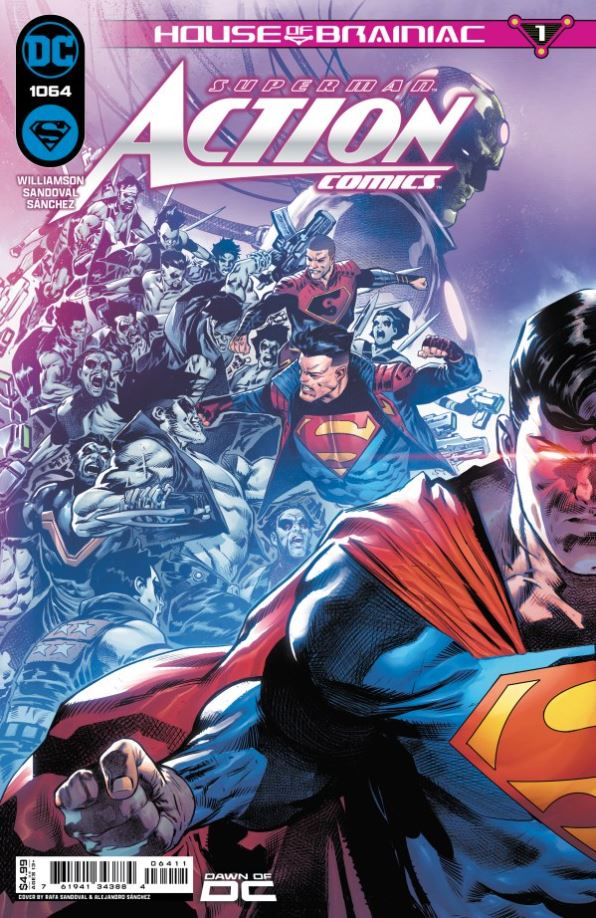
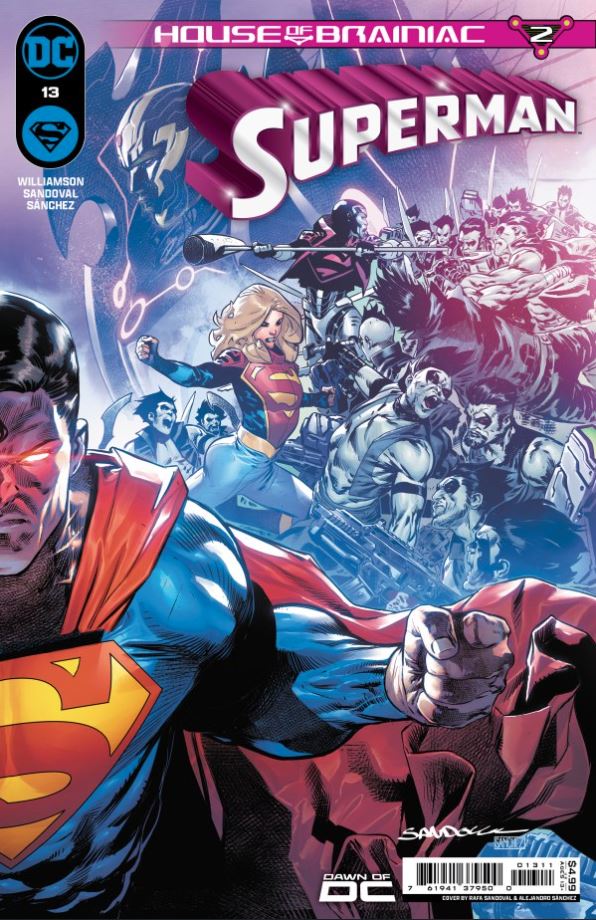
Written by Joshua Williamson. Art by Rafa Sandoval & Miguel Mendonca.
Main Event: Action Comics #1064-1066, Superman #13-15 and Superman: House of Brainiac Special.
Spinning out of Joshua Williamson’s critically acclaimed run on Superman comes “House of Brainiac” – a crossover event that spans both Superman titles and, as the name suggest, chronicles the return of Brainiac to the main stage.
Superman: House of Brainiac focuses on the actions of a Brainiac who’s tired of losing and recognises that if knowledge is power, then so too is power knowledge. So, he turns to violence, unleashing a bottled city of Czarnians upon the people of Metropolis – and it takes the entire Super-family to stop it.
Not only is this event born out of the ongoing storylines in the Dawn of DC, but it also sets up hugely important pieces of the wider narrative going forward. In particular, this story sees the debut of a new villain that is integral to the closing chapter of the Dawn of DC: Absolute Power.
Other Initiatives & Imprints during the Dawn of DC
Alongside the tentpole ongoings and events, there were also numerous other, smaller initiatives decorating DC’s publishing line during this time.
We Are Legends
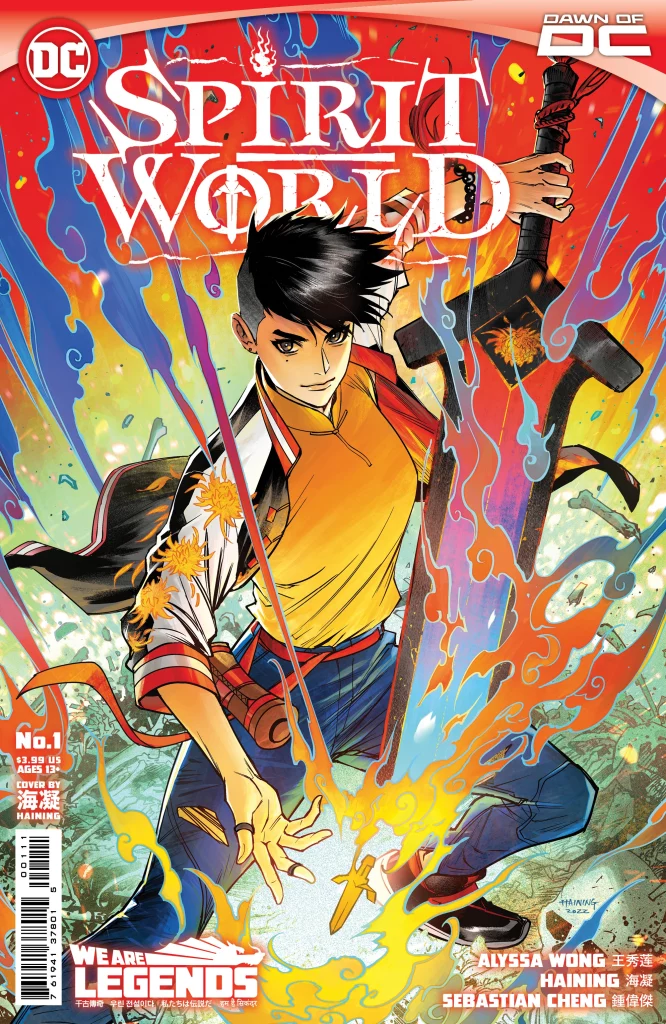
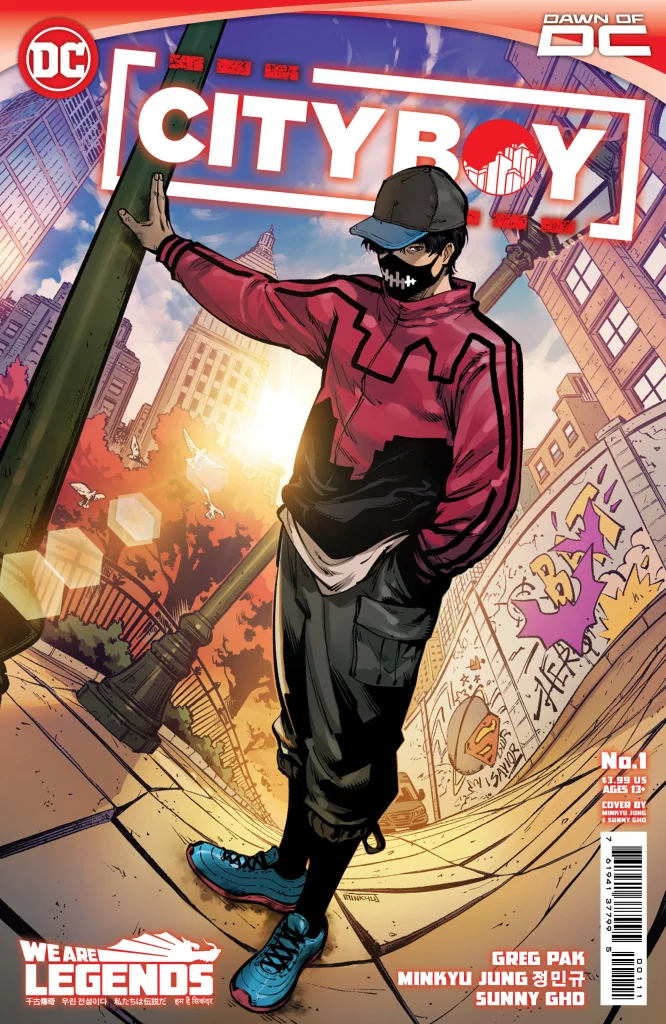
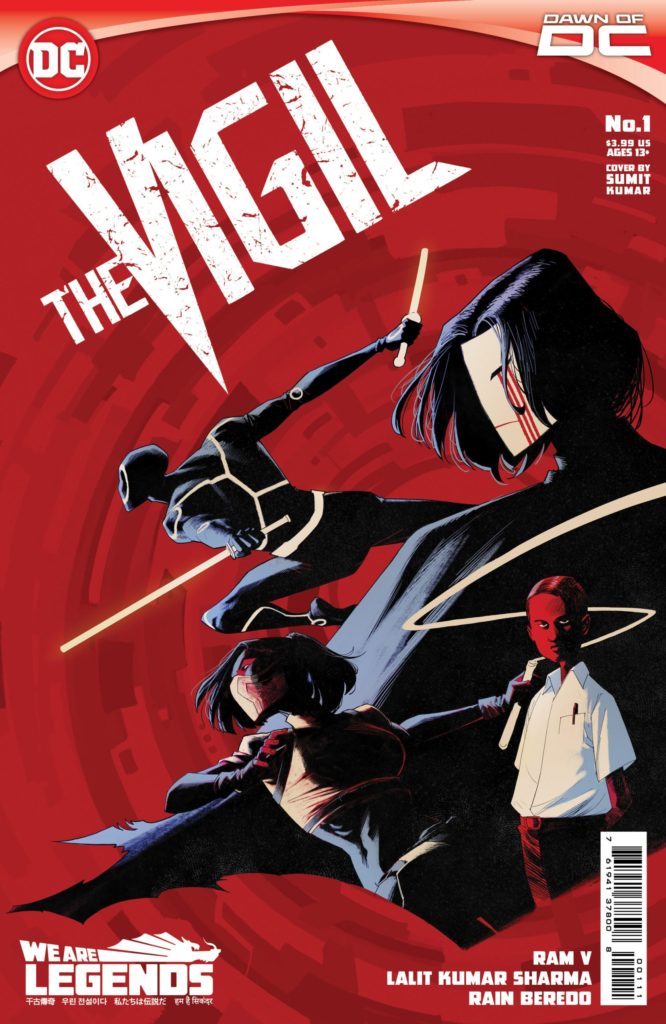
Launched in May 2023, DC made a concerted effort to build on the momentum they’d garnered in previous years, with releases like the DC Pride and DC Power specials, to further broaden the types of stories (and storytellers) they gave space to.
We Are Legends was a pop-up imprint that focused on AAPI characters and creators. It saw rising talent in the writing world like Ram V, Alyssa Wong and Greg Pak, alongside stunning artists like Haining, Minkyu Jung and Lalit Kumar Sharma, introduce entirely new heroes and villains that drew on different AAPI cultures.
For example, V and Sharma’s The Vigil centred on a team of government-affiliated Indian superspies as they stopped global crises before they started. Meanwhile, Pak and Jung introduced readers to Cameron Kim, a.k.a. City Boy, in an incredibly moving tale about culture, abandonment and finding one’s place in the world. And, of course, a cosmic battle with the New Gods themselves – these are superhero comics done right, after all.
All of these titles were 6-issue mini-series, which will be collected in trade paperback format in April 2024.
While not tied directly into the Dawn of DC (in fact, these books are largely left to their own devices and are not forced into any distracting tie-ins as a result) I would highly recommend them. Not only do they all feature the debuts of incredibly well-realised new characters, they also highlight some genuine, and often rare, examples of incredibly creative storytelling that successfully diversifies what mainstream superhero comics can be.
The New Golden Age
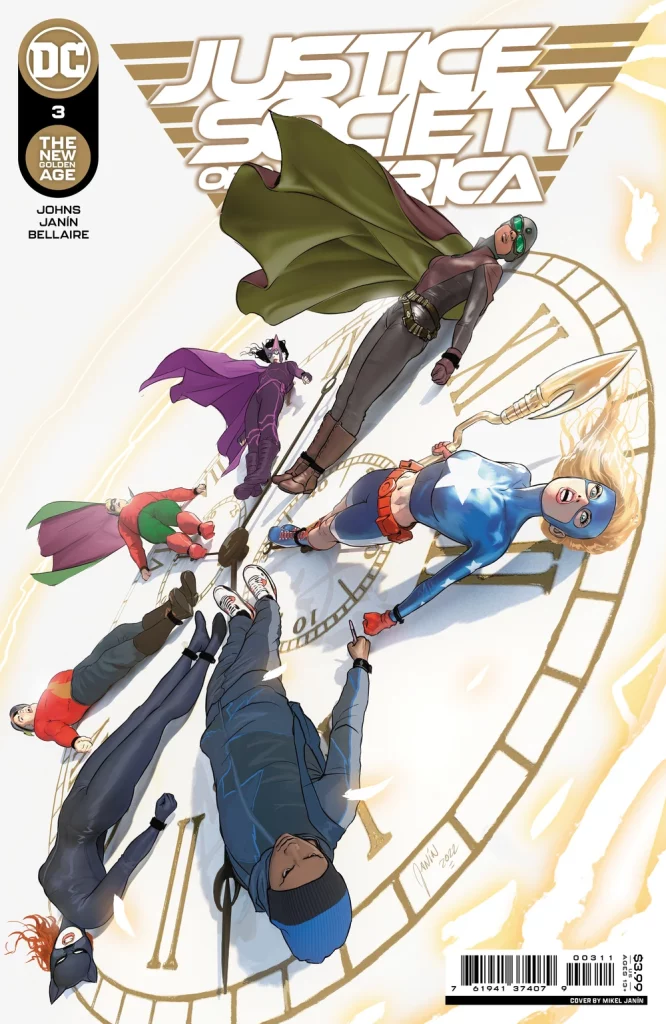
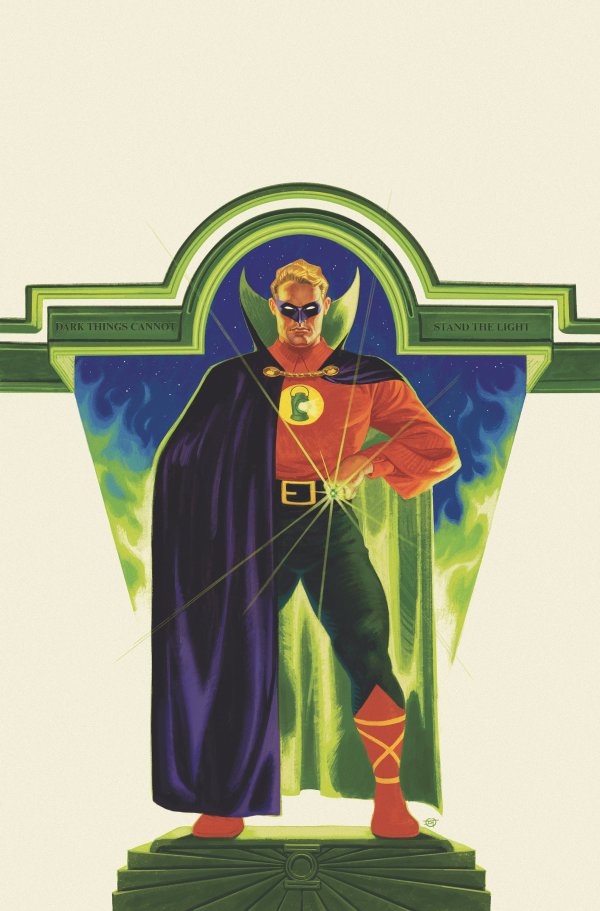
Unlike We Are Legends, which focused on widening the scope of DC’s pantheon, The New Golden Age set out to deepen (and in some sense revitalise) the kind of stories that featured some of DC’s oldest heroes.
Kicking off in The New Golden Age #1 in 2022 (and now collected alongside the proceeding JSA issues, more on those later), this mini-imprint focused on the forgotten generations of heroes that helped build DC Comics – the Justice Society of America and, to a lesser extent, the Legion of Super-Heroes.
Spearheaded by Geoff Johns, before he left to create his own comics company Ghost Machine, the New Golden Age first began with two series: Justice Society of America (2022-) and Stargirl: The Lost Children. After the initial arc of JSA, and the culmination of Stargirl, the New Golden Age exploded out into three new mini-series, supporting the ongoing adventures of the central JSA title.
These books starred key members of the 1940’s super-team, telling stories specific to them both during the past and within the present day DCU. The names of these titles are:
- Alan Scott: The Green Lantern
- Jay Garrick: The Flash
- Wesley Dodds: The Sandman
As of now, the future of this corner of the DCU is unclear. While all titles were well received critically and commercially, chief architect Geoff Johns has left for the aforementioned Ghost Machine – and he’s exclusive to them from here on out. Whether another creator will step in to run things, or whether things will quietly end around Justice Society of America #12, it remains to be seen.
World’s Finest
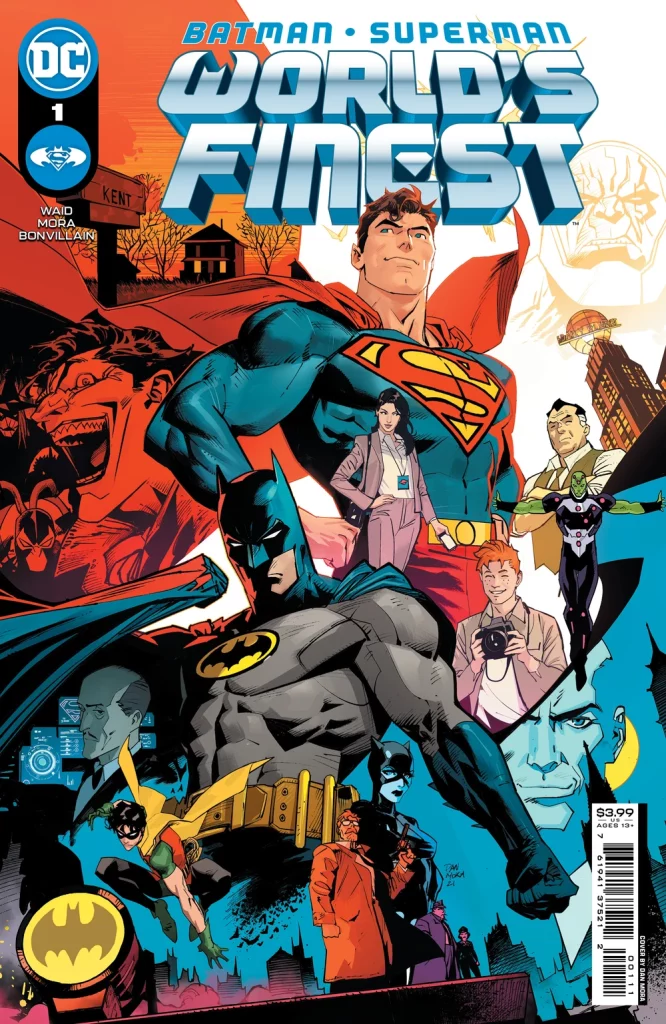
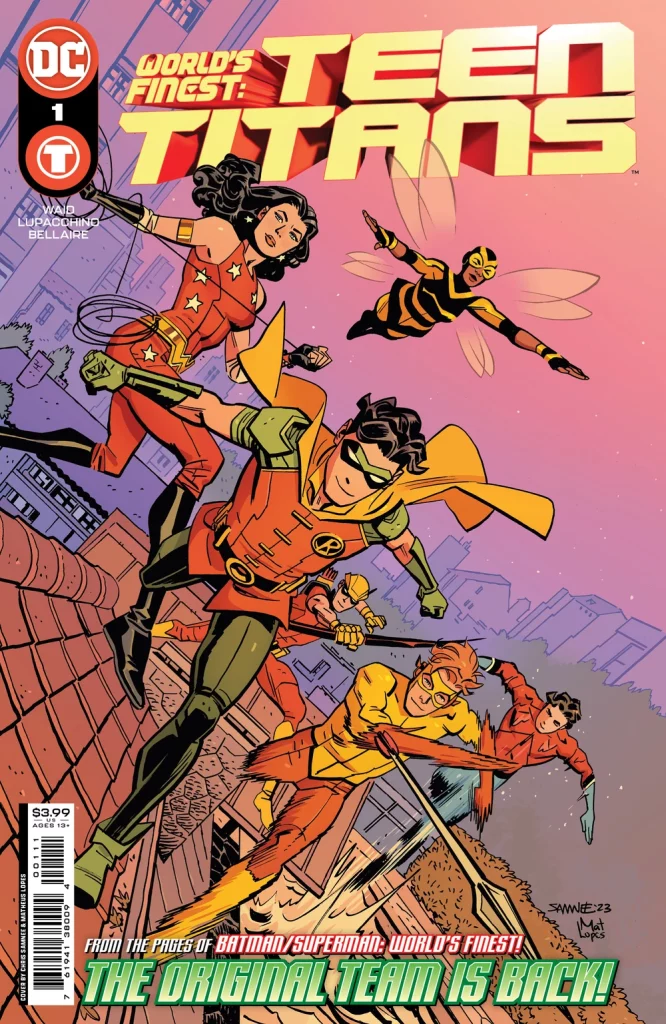
Not officially an imprint – more of a banner-titled applied to various, thematically related series – the World’s Finest books share some DNA with the New Golden Age line. Both are tight, highly curated efforts, driven by key creators (Johns above, Mark Waid here) that focus on revisiting previous eras in DC’s history.
However, unlike how the New Golden Age specifically revisits the real-world 1940’s as a time period, the World’s Finest titles are interested in exploring the fictional past of the Silver Age. That is, Waid and co. are exploring an era of storytelling in comics that falls somewhere between 1956 and the early 1970’s. It’s a time when the ideas were big, the characters were simpler and the world (at least within the pages) was somewhat lighter than we find it today.
What’s interesting about this aspect of the Dawn of DC is that while it could, in a lesser writers hands, come off as a superficial appeal to nostalgic drives, the World’s Finest titles actually manage to elevate a tradition of comics storytelling that is increasingly at risk of falling into a regressive spiral of fan service and stagnancy. It manages to draw not on any specific story during the Silver Age, mooring it helplessly in a quagmire of continuity, and instead evokes the essence of the period.
Batman/Superman: World’s Finest, and later World’s Finest: Teen Titans, succeed at the kind of deceptively sophisticated storytelling that most pop culture tries and fails to capture. It harnesses nostalgia and uses it as fuel to create something new. Waid finds a way to modernise old ideas, expressing the familiar through the lens of genuine and novel creativity, bringing generations of readers along together for a story that resonates with the fundamentals of what DC Comics are all about.
Additionally, if you enjoy Batman/Superman: World’s Finest and later World’s Finest: Teen Titans (with jaw-dropping art by Dan Mora and Emanuela Lupacchino respectively), then make sure to check out Waid and Mora’s ongoing Shazam! series in the Dawn of DC too.
While not formally a part of the World’s Finest titles, it carries with it all the sensibilities of their other series, similarly exploring the fundamentals of what makes the Marvel family so endearing, and enduring, all these years on.
What Comes Next?
While the Dawn of DC is not technically over, it is coming to a close. Naturally, that begs the question of what’s yet to come.
As we know from the forward solicits, the next big series tied in to the macro-narrative will be Suicide Squad: Dream Team from Nicole Maines and Eddy Barrows. This sees Amanda Waller recruiting Dreamer, as well as Harley Quinn and various other familiar names, to act out her nefarious schemes in the name of national (and perhaps this time global) security. That drops in March 2024.
From there? We’ll have to wait and see, but as more news is revealed on the future of the Dawn of DC, we’ll be sure to keep this guide up to date with everything you need to know.
If you enjoyed this Making Comics Simple guide, please consider signing up to our newsletter! We publish informational articles like this on comics frequently, and we also produce highly detailed critical essays on the very best of what comics have to offer.
